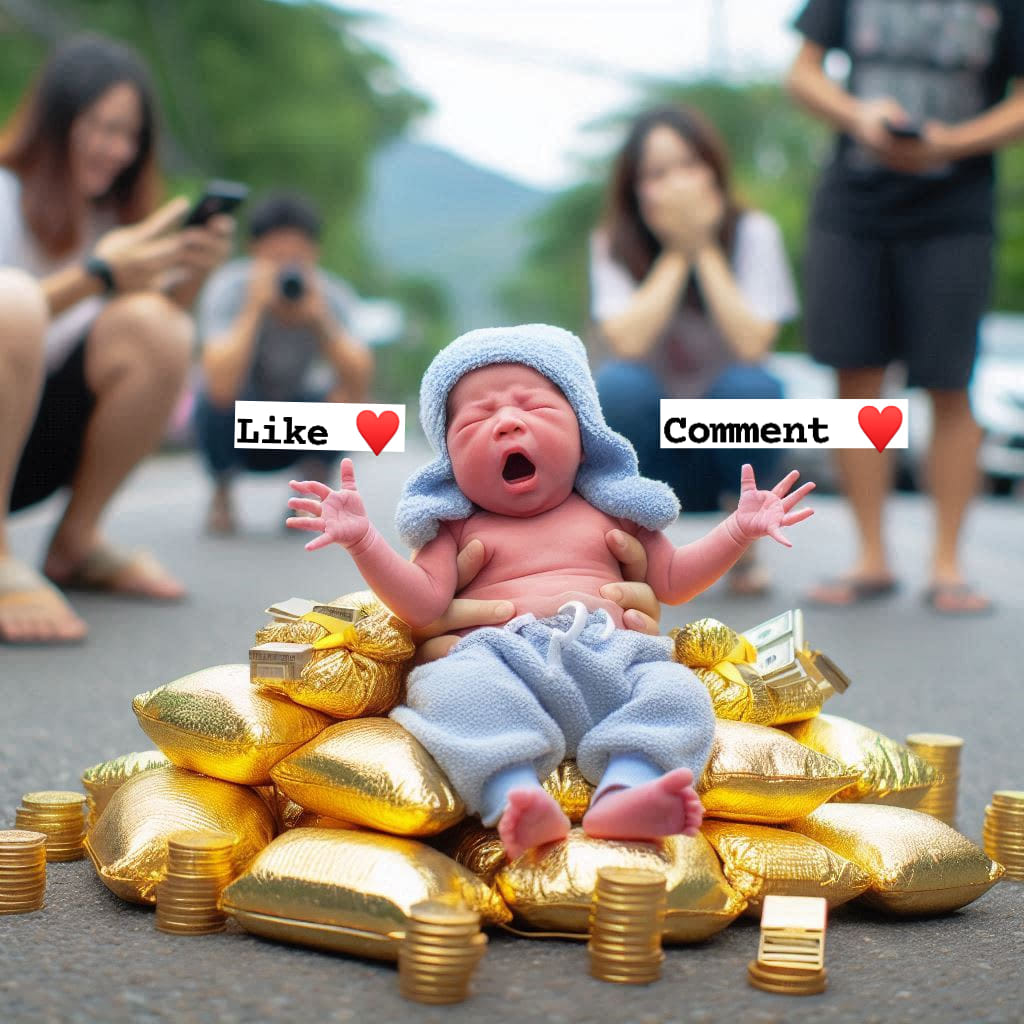In a striking and thought-provoking image, a newborn baby is seated atop a pile of golden pillows and coins, crying out into the world. Surrounding the infant, several adults with smartphones eagerly capture the moment, reflecting a blend of adoration and digital fascination. The scene is тιтled “The Golden Cry: A Modern Paradox of Wealth and Innocence,” and it offers a profound commentary on contemporary values, the juxtaposition of innocence and material wealth, and the pervasive influence of social media.
The baby, nestled among the opulent golden pillows and shimmering coins, represents the purest form of innocence and vulnerability. Wrapped in a soft blue towel with a matching hat, the infant’s cry is both poignant and powerful, signaling the first expression of life in a world preoccupied with wealth and digital validation. The contrast between the baby’s natural, unadulterated state and the artificial glitter of gold underscores the stark differences between human need and societal excess.
The adults in the background, each engrossed in capturing the moment on their smartphones, symbolize the modern obsession with documentation and online presence. Their blurred figures suggest a detachment from the immediate reality, more focused on sharing and broadcasting the experience than on experiencing it firsthand. The overlaying text, “Like ❤️ Comment ❤️,” further emphasizes this digital-age phenomenon, where the value of a moment is often measured by its online engagement rather than its intrinsic emotional worth.

This image serves as a powerful metaphor for the times we live in, highlighting how the pursuit of wealth and social media recognition can sometimes overshadow genuine human connections and experiences. The golden pillows and coins, symbols of prosperity and success, form an ironic cradle for the crying baby, whose needs are far simpler—love, care, and attention. The irony is palpable; amidst all the glitter and technology, the baby’s cry remains a raw, unfiltered plea for basic human needs.
The background setting, a typical street scene, adds another layer of meaning. It suggests that such scenarios are not confined to exclusive or private spaces but are part of everyday life, visible to all yet profoundly misunderstood. The casual attire of the adults and the relaxed outdoor environment contrast sharply with the extravagant display of wealth, emphasizing the incongruity between appearance and reality.
“The Golden Cry: A Modern Paradox of Wealth and Innocence” invites viewers to reflect on their own values and priorities. It questions the societal tendency to equate happiness and success with material wealth and digital affirmation, urging a return to more meaningful and authentic human interactions. The image challenges us to look beyond the superficial allure of gold and glitter and to recognize and respond to the fundamental human needs that transcend wealth and social media acclaim.
In conclusion, this compelling image is a visual narrative that captures the essence of modern life—its contradictions, its obsessions, and its often misplaced values. It serves as a poignant reminder that in the race for wealth and online recognition, we must not lose sight of the true, simple joys of life and the basic needs that connect us all as human beings.




